Coming Soon ...
2.3
Guideline for silage making
Level 3 - Extension Workers, Input & Service Providers
Introduction

1. You will learn about...

2. Making Maize silage
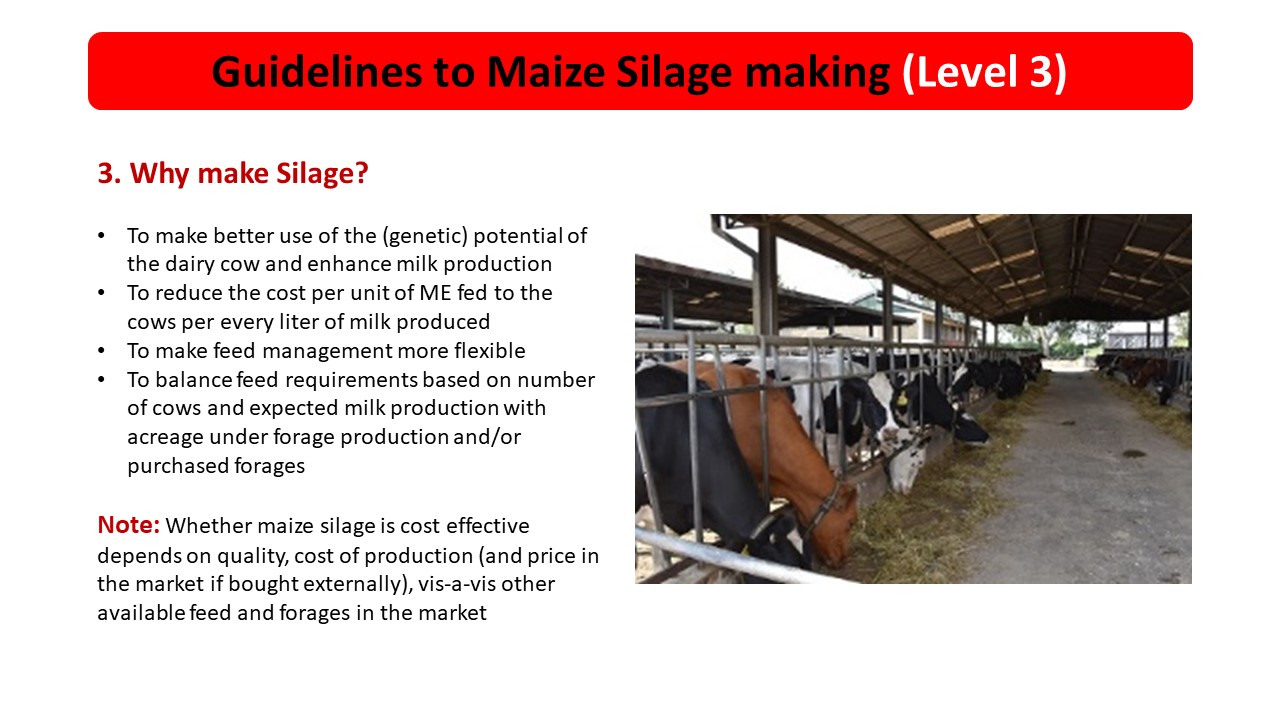
3. Why make Silage?

4. How to test dry matter in the cob?

5. Stage of harvesting maize fodder for silage
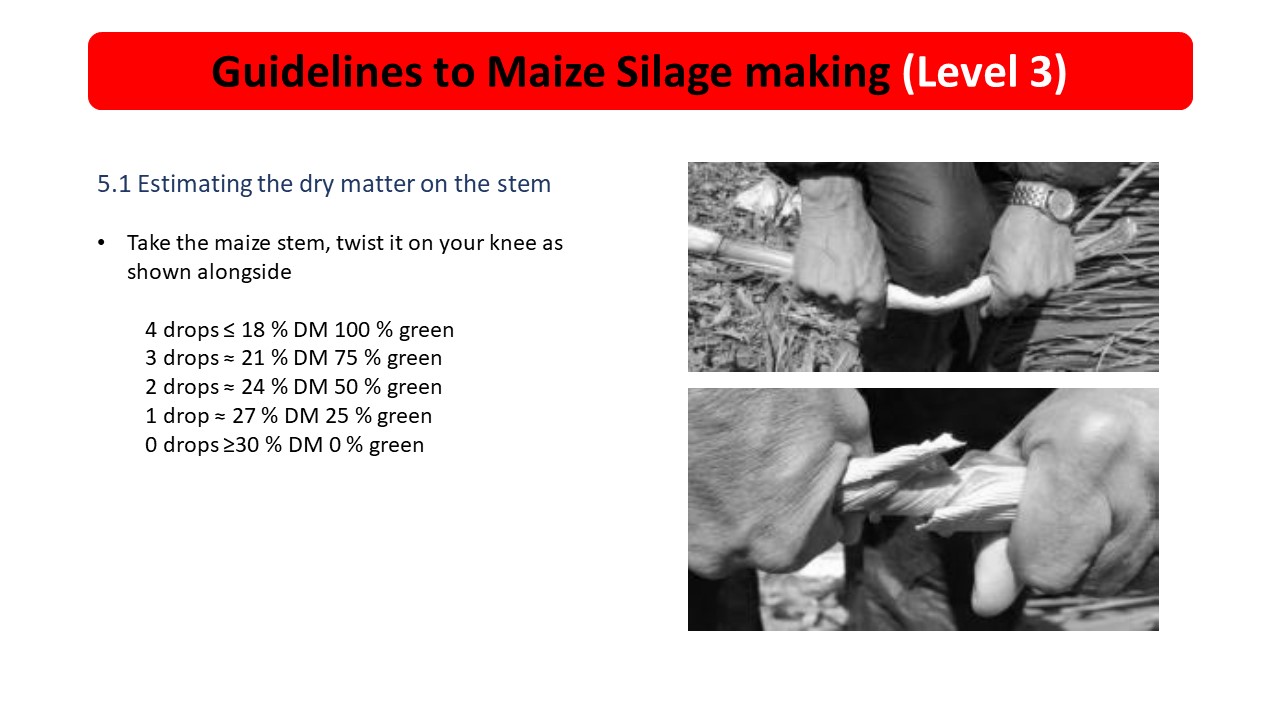
6. Estimating the dry matter on the stem

7. Weather conditions at harvesting

8. Chopping
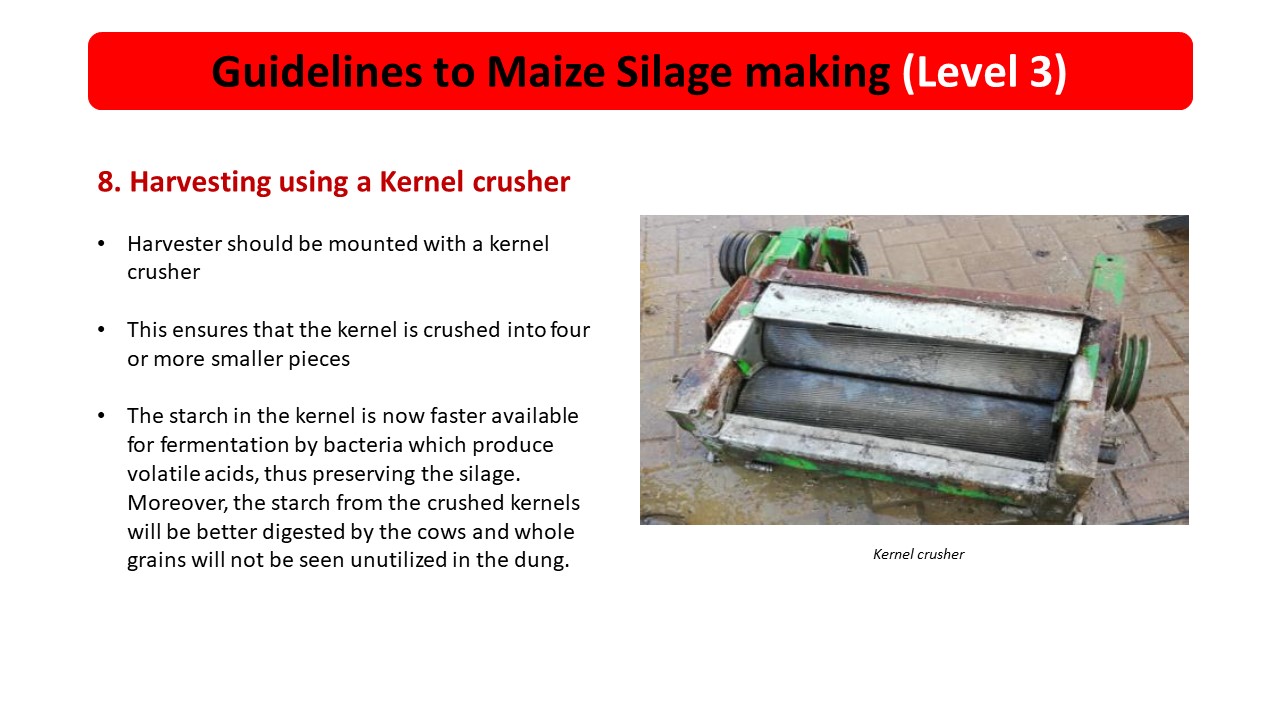
9. Harvesting using a Kernel crusher
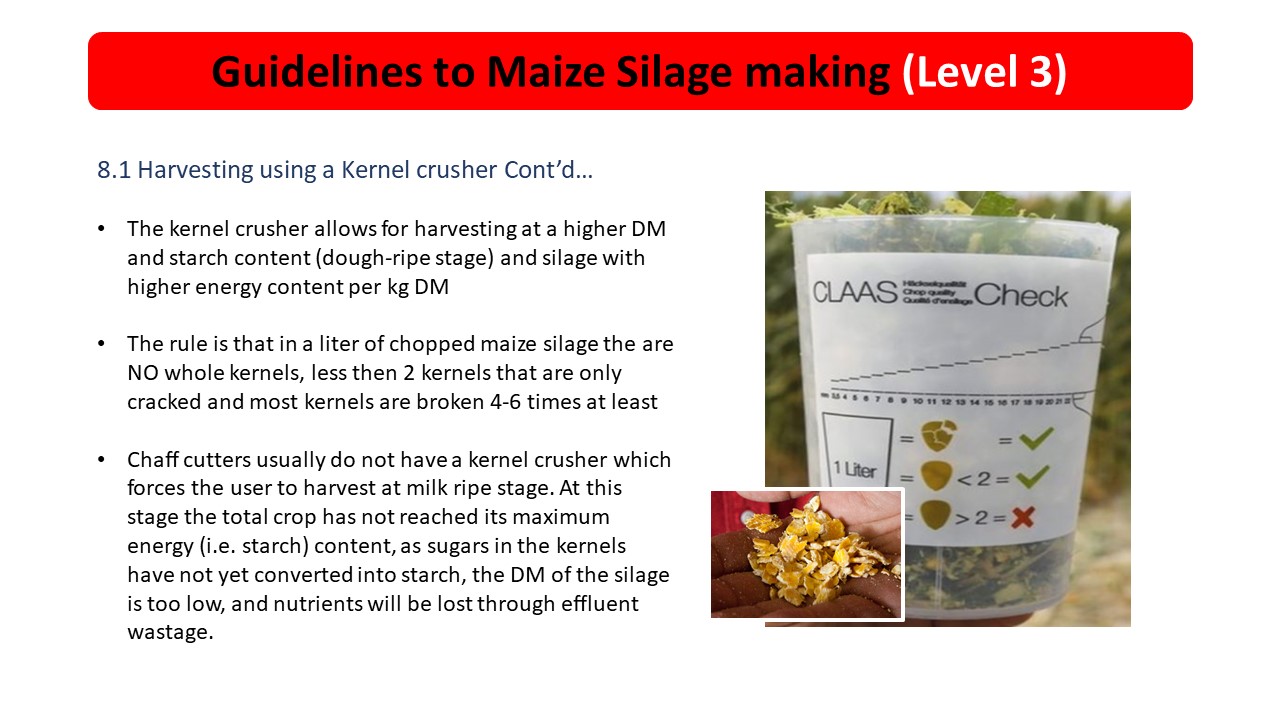
10. Harvesting using a Kernel crusher Cont...
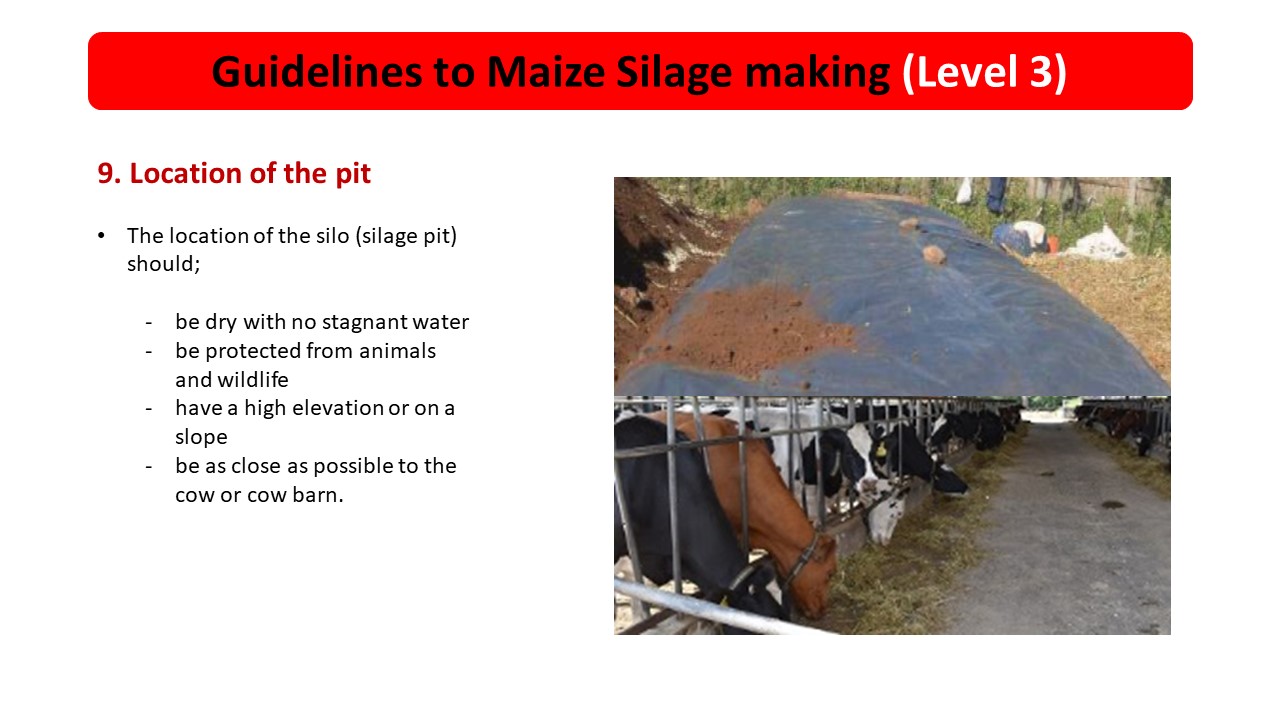
11. Location of the pit

12. Transportation

13. Filling of the Silo: Pit / clamp / bag
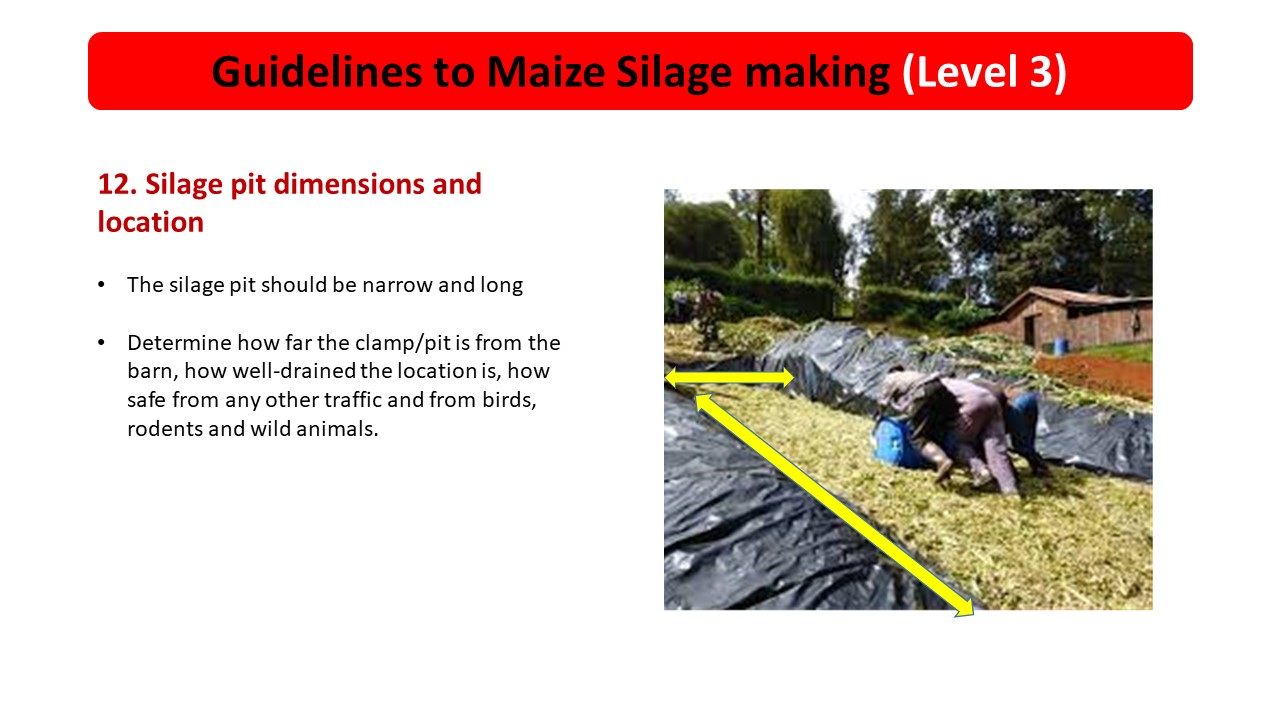
14. Silage pit dimensions and location

15. Compacting

16. Sealing

17. Sealing Cont...

18. Covering with soil

19. Covering with soil Cont...

20. Silage making in transportable bales

21. Fermentation

22. Feed Out

23. Feed Out Cont...

24. Feed Out Cont...

25. Feeding

26. Feeding Cont...

























